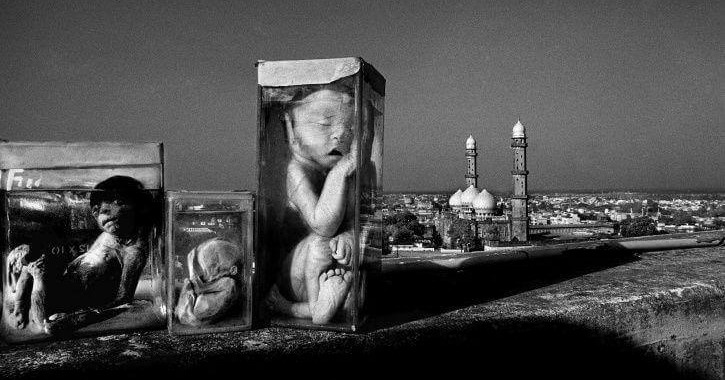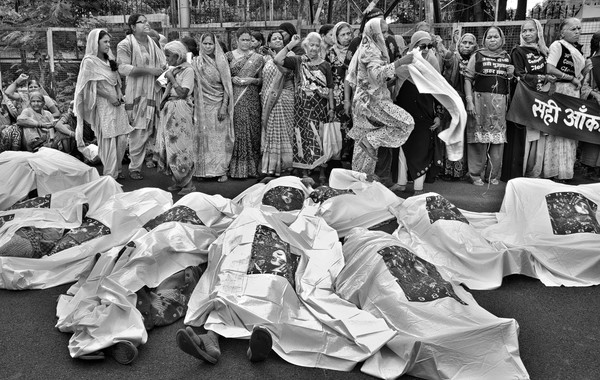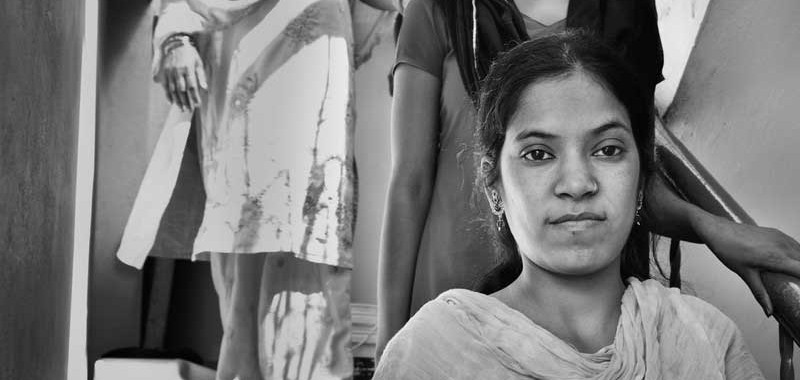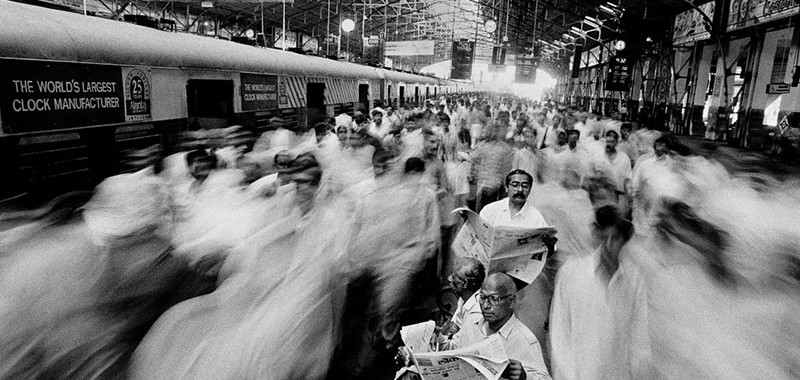The World of Raghu Rai: His Photography & Life
- Shweta Singh
- Jan 11, 2022
- 8 min read
“A photograph has picked up a fact of life, and that fact will live forever.”
It was a picture of a donkey that started it all. Raghu Rai, one of India’s most eminent and legendary photographer and photojournalists of our generation, looks back at this funny anecdote as the start of what was going to become his passion for life.

Known as the ‘Father of Indian Photography’ – Raghu Rai was amongst the early pioneers of photojournalism in India who is best known for his contributions in documenting various socio-political events such as the Bangladesh Brutalities (1971), Bhopal Gas Tragedy (1984), as well as capturing beautiful portraits of icons namely Mother Teresa, Bismillah Khan, his holiness Dala Lama and much more.
While it would be justifiably unfair to categorise Mr. Rai’s decades long work into one category or “style” – his approach to photography is intuitive, honest, and bold.
In this blog, we will look further into Raghu Rai’s craft: the techniques, the monumental feats, and some stories which hopefully along the way help you look at photography from a unique perspective.
Source: An Unframed Portrait Trailer
Raghu Rai’s Early Days
Growing up, photography wasn’t really on Mr. Rai’s radar – his father wanted him to become a civil engineer while he wanted to be a musician. His brother, Sharampal Chowdhry or better known as S. Paul, however, was a renowned photographer living in Delhi. During one of the days when Mr. Rai was staying with his brother, he instinctively picked up the camera and started taking pictures of a young donkey to amuse the children around.

When the photos developed, S. Paul saw the picture and sent it to The Times, London. Seeing the picture published with his name written on it, Raghu Rai had come to a realisation,
“When I picked up the camera and looked through the viewfinder, all my energies were focused on what I was looking at. That was something very different for me. The camera was an instrument to have a closer look at life.”
He soon went on to become the chief photographer for The Statesman in 1966 and after that worked for many other news houses such as Sunday and India Today. In the year of 1977, he was nominated to join Magnum Photos Agency by Henri Cartier-Bresson – the founding father of photojournalism. As his protégé, Mr. Rai’s lens captured many catastrophes of the Indian history.
Raghu Rai’s Technique
“Skills are never taught, they are acquired. I can give you a camera but can’t feed your vision.”
As I said before, the brilliance of Mr. Rai’s photography doesn’t lie in a checklist of dos and don’ts. In various interviews, he reiterates the importance of intuition and seeing beyond the superficial. His technique lies in how to see truthfully rather than seeing through an expensive gear. He doesn’t believe in the concept of natural genius; he believes in acquiring and honing a skill.
Observation: Learning to see, to really see takes patience and practise. To build your observation as a photographer you must become one with the place and the people. Mr. Rai only starts shooting when the people are comfortable with his presence (and often forget about his presence), this is the reason why in most of his pictures, people are turning away rather than looking into the camera.

Focus on people, not symmetry: When asked about why several of his pictures were off centre, Mr. Rai responded promptly: “Where in India is anything in the centre?” In his works the action is in the corners, in the periphery – a consequence of focusing on the action rather than the frame. One can only spontaneously capture the action when they are focused and observant.

The Philosophy of Photograph: Appreciate the silence says Mr. Rai. While many photographers or artists strive to stir deep emotions or create “noise” with their art, Mr. Rai takes a rogue approach, like that of Buddhist philosophy of silence, he believes the greatest art is one which restores silence instead of disrupting it.

Black and White: The intensity of black and white photography easily surpasses that of a colour photograph. Raghu Rai for most of his career has shot in black and white.
“Digital technology is so good and easy that you put any camera on auto focus, auto exposure, and it takes these flawless, well-exposed pictures, full of colours. That rang-birang is becoming such a vulgarity, that sometimes, with a vengeance, I convert my pictures into black-and-white.” (source)
From this quote for an Indian Express interview, it’s clear that Mr. Rai doesn’t necessarily despise colour or digital technology but rather it’s tendency to be “flawless”. While shooting in monochrome, there is a layer of rawness where the viewer is more focused on the subject rather than being distracted by the colour that surrounds them.
Hold on, then let go: It is often said that to be a genius you have to be a little crazy. The crazy is an obsession for the craft, and it’s easy to get caught up with perfecting it. For Mr. Rai, the process needs to be pure.
“What defines us in the world of art or in any other world are the chances that we have turned into opportunities for ourselves.”
Doubt shouldn’t plague your art because doubt makes you lose out on your honesty. You can work hours but once it’s finished you must let go of it completely.
Transition to Digital
Raghu Rai for most of his career, shot with an analogue camera. The transition to digital photography and even more recent ‘iPhone photography’ was a welcome change by Mr. Rai. When the transition to colour took over, he carried two cameras – one for colour and the other for black & white. When it comes to digital, he now only carries one camera – a Nikon D800 and if a picture doesn’t work well with colour he just converts it into black and white. With the popularity and affordability of DSLRs, the accessibility has surely widened and Mr. Rai appreciates the technical quality that it offers. Even when it comes to aesthetics, the digital technology offers so much space and freedom for experimentation that perhaps a 36 frame reel couldn’t.
Raghu Rai’s Famous Works
With over 50 years of working with the camera, Raghu Rai has captured some of the most momentous events and people. Let’s look at some of his important works by dividing them into the categories of events, cities and people.
Events
As is any photojournalists job, when duty calls you ought to be there. Be it war or a peace protest, a picture in high-stakes situation becomes a marker of history and evidence of truth.
“If in a difficult situation, a photograph manages to capture the essence, the magnitude, the depth of that experience, which is honest and intuitive and on a par with what nature holds as a mirror to you, then the camera has served its purpose.”
In Raghu Rai’s career, the most crucial events he covered are notably: The Bhopal Gas Tragedy and the brutalities in Bangladesh.
The Bhopal Gas Tragedy: When Mr. Rai arrived at Bhopal early in the morning he was shocked to see what was in front of his eyes – death, loss, and pain. Over 20,000 people died and as photojournalist a lot of responsibility comes down upon you in how the event is remembered.
Image Source: Magnum Photos
In Bangladesh: When the nation of Bangladesh gained freedom, it came with a price. Severe brutalities against the citizens roared with rapes and assaults as common occurrences. It was Mr. Rai who took his assignment head on to document the plight of the refugees coming to India, the war between India and Pakistan, with the joy of victory and independence.
Image Source: Raghu Rai Foundation
Cities
Varanasi: Mr. Rai captures the essence of not just the holy city of Varanasi but the humanity that resides. “Everything is experienced at once - the ghats, the streets, the faith, the temples, the river, the celebrations, man and beast, the burning bodies, all jostling for space in the same frame.”

Mumbai: For Raghu Rai, Mumbai was like a mini New-York, the hustle bustle, the cosmopolitan metropolis, where seekers from different parts of the country come with a dream, Mumbai as he describes it as the city where dreams don’t die.
Image Source: Raghu Rai Foundation
People
Being an icon himself, Raghu Rai has shot some pretty iconic people too. From Dalai Lama to Mother Teresa, the subjects of his camera share depth in every photo taken.
Dalai Lama:

Mr. Rai first met His Holiness in year 1975 while working on an assignment for The Statesman. Capturing Dalai Lama like no one has done before, his book, ‘A God in Exile: The Fourteenth Dalai Lama’ took over forty years into making. The photos in the series capture the very luminance exuded by His Holiness, even when they are shots of the mundane and ordinary, the stillness Mr. Rai strives to evoke becomes prevalent.
“He left an indelible impression on me— gentle, gracious, humble, and full of wonder. It is peculiar to say such a thing, but I got the strange yet pleasant feeling of being equals, despite his position,” – God In Exile

Mother Teresa: In another long haul of capturing a persona, Mr. Rai spent four decades to put together his book, ‘Saint Teresa of Calcutta: A Celebration of Her Life and Legacy’. What’s interesting is that through the lens of Mr. Rai, even Nobel laureates come across as common people. His unusual and often invasive style of photography delivers a sense of humanity, such that in these in-between monochromatic snapshots we see the larger-than-life humans as more humane.
When Mr. Rai first met Mother Teresa, he enthusiastically clicked as many pictures as he could. Mother Teresa questioned him, “how many more times will you click?” to which he responded, “Mother, how many more times will you pray? - Mother, this is my way of praying and discovering life.”
Indira Gandhi: Speaking of influential women, Raghu Rai’s portrait of Indira Gandhi is indispensable to not just the photojournalist landscape but also to the country’s socio-political records. Mr. Rai began photographing Indira Gandhi soon after she became the first woman prime minister of India in 1967. A great photograph has the ability to express many unsaid things and Mr. Rai is a master at artistically exploiting this.
“It is bugging when you need to add a subtext to an image to make sense of it. Your image is good if it can speak for itself just now and no more.”

A particular favourite of mine from Mr. Rai’s collection is the picture of Indira Gandhi at the Parliament House. A group of Congress men standing, waiting for her as she signs some papers – this picture captures the power she held, the power she exuded, the times of the first woman prime minister in India.
Satyajit Ray: His favourite and most memorable person to photograph is Satyajit Ray or who he adoringly calls Dadu. Captured on the sets of his Bengali film ‘Ghare Baire’ – Ray’s photograph display the beauty of shadows in play:
“I moved towards the other side from where you could only see his back and I realized that the lighting was very dramatic. You could see the adjoining room through the door and there were spectacular shadows falling on the wall,” he shares.

Learning about Raghu Rai’s photography is similar to learning philosophy – his works inspire you to see the world different. The way he sees the world cannot be articulated or replicated, and that’s okay. What’s important is to make sure it comes from your heart – honest and bold.
Curious to know more about Raghu Rai? Check out this amazing in-depth talk by Mr. Rai himself, where he opens up about his journey and his works
In 2017, Mr. Rai’s daughter, Avani Rai also released a documentary Raghu Rai: An Unframed Portrait which traces the history of India through his photography and how it left a lasting impact on him.



































Correct asap. His holiness Dalai Lama